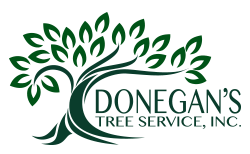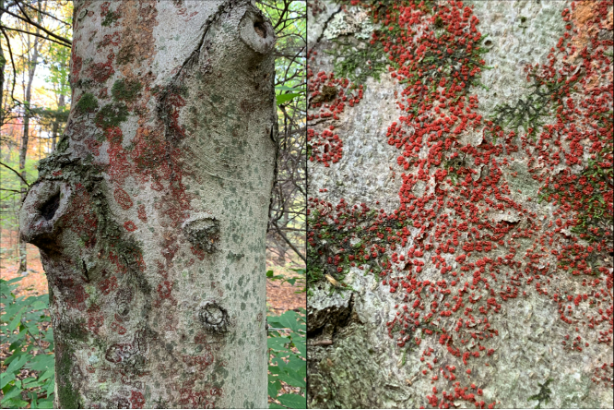Native + Endangered Species
By Anna Thayer
Did you know that May 20, 2022, is Endangered Species Awareness day? [1] This month we encourage you to learn more about endangered species of our area. There are many ways a species can become endangered or threatened, and one of the ways they can become endangered or threatened, is by non-native invasive species attacking native species by over-crowding them or starving them. Some act like parasites and diseases. No matter how they do it, invasive plant, animals and insects are causing a lot of damage to already sensitive ecosystems and the native species that live in the said ecosystems. This often can cause our native species to be listed on the endangered species list or in the worst case, extinct.
This month we wanted to highlight 4 non-native invasive species and how they can harm the native species of the area: the Spotted Lanternfly (SLF), the Tree of Heaven, Beech Leaf Disease, and Beech Bark Disease. We will also share details about a local volunteer opportunity — please consider volunteering.
The Spotted Lanternfly is an invasive non-native bug from China that likes to pull nutrients out of trees. They then excrete their waste creating the perfect environment for sooty mold. [2] The harsh drain of nutrients from the trees by the SLF is damaging to the tree’s health and can be potentially fatal to the tree’s life. The black sooty mold like substance left from their droppings create further damage to the tree, and in some cases the tree cannot bounce back from.
This invasive non-native bug does have predators like birds, snakes, other bugs, fish, and frogs. However, if the SLF is feasting on the Tree of Heaven (another non-native invasive species) it changes the taste and look of the SLF in a way that make their predators non interested in them. [3] You can learn more about the Spotted Lanternfly here and here.
The Tree of Heaven is a fast growing and completely non-native invasive tree from China. [4] It grows and smothers out all the native plants in the area. It also releases toxins in the soil to kill off the root structures of the native plants in the area. It is also the most ideal feasting and breeding area for the SLF. All around, this is a bad plant to have in our area. It should be taken down, but you really need to be careful about how you take this one down because the roots like to sprout and then you have a lot of new Tree of Heavens all over the place. They also have seeds that like to disperse all over and germinate strong and fast. Curious to learn more? Get more details here, here and here.
Beech Leaf Disease (BLD) is caused by a nematode, Litylenchus crenatae ssp. Mccannii, which feed on the Beeches causing the leaves to turn brown, blister, pucker, distort, curl up, and wilt. [5] Dark banding of the leaves will take place in the summer time as well. It is rapidly moving across the forests of North America. [6] The nematode causes foliage damage and can kill a Beech in about seven years. Their origin is not clear as well, nor are scientists clear if BLD is a primary attack or the cause of disease. It has been confirmed close to home in Prince William County, Virginia, which is highly alarming. [7] Beech trees have been dealing with Beech bark disease for a while now, and now BLD is spreading…this could be catastrophic to our Beeches. Important information for BLD can be found here and at Fairfax County’s Public Works and New York State’s Department of Environmental Conservation.
Beech bark disease, brought in from Europe, is an issue we should monitor closely. Native Beech trees of America are under threat from a fungus that derives from a scale bug. The little invasive scale bugs, Cryptococcus fagisuga Lininger, infest the Beech trees, then a fungus follows the infestation, sometimes years later, and finally the fungus kills off the Beech trees. [8] Damage to the bark and the vascular tissues of the trees from this scale/fungus combo is fatal to the tree’s health. Learning more about the stresses of the Beech bark disease will help us combat against it to help save the Beeches. Want to learn more about Beech bark disease? We recommend reviewing this brief from Ohio State, this article on Adirondacks Forever Wild, this report from Michigan, and this fact sheet from the University of Massachusetts Amherst
We’d love to hear your thoughts! Email us anytime!
References:
SLF link: https://www.ento.vt.edu/4-H_Entomology/SpottedLanternfly.html
2 – https://entomologytoday.org/sooty-mold-caused-by-spotted-lanternfly/ and https://nysipm.cornell.edu/environment/invasive-species-exotic-pests/spotted-lanternfly/spotted-lanternfly-ipm/damage/
3 – https://www.ncbi.nlm.nih.gov/pmc/articles/PMC6237927/
5,8 – https://www.sciencedirect.com/science/article/pii/S0378112721008446
6 - https://www.science.org/content/article/beech-leaf-disease-ravaging-north-american-trees
Beech links: https://www.dontmovefirewood.org/pest_pathogen/beech-leaf-disease/, https://www.fairfaxcounty.gov/publicworks/trees/beech-bark-disease, https://www.dec.ny.gov/lands/120589.html, https://ohioline.osu.edu/factsheet/plpath-tree-09 , https://wildadirondacks.org/trees-of-the-adirondacks-american-beech-fagus-grandifolia.html , https://www.canr.msu.edu/uploads/files/e2746.pdf




